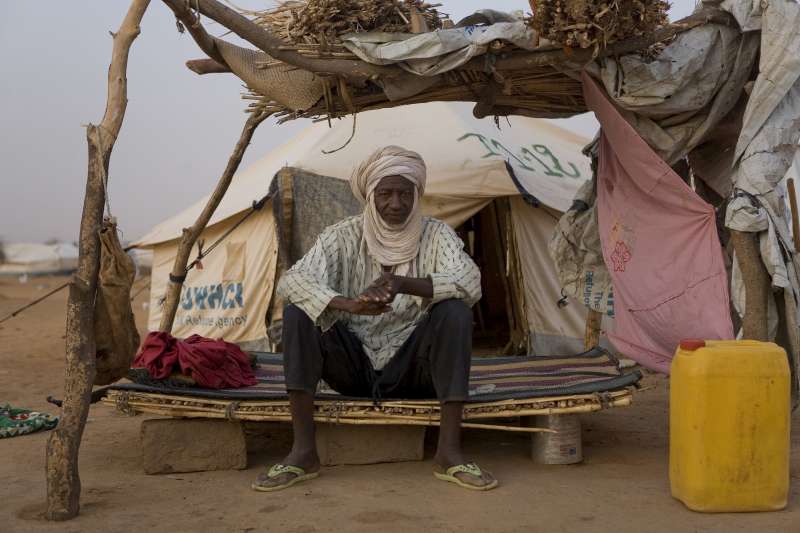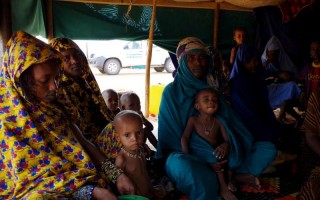
Malian refugee Alassane Maïga sits on a makeshift bed at Abala refugee camp in Niger. © UNHCR / H. Dicko
GENEVA, Nov 10 (UNHCR)—The number of Malian refugees in Niger has reached its highest level since conflict erupted there in 2012, with thousands fleeing eastern Mali in recent weeks despite the signing of a recent peace accord, the UN refugee agency said on Tuesday.
The Algiers Accord was signed in June between the Malian government, a loyalist militia and a Tuareg-led rebel coalition. It has brought significant steps towards peace in parts of the country, but it has not stemmed the flow of refugees into neighbouring Niger.
The number of Malian refugees in Niger stood at around 50,000 at the height of the 2012-2013 civil war, which ended when French and Malian troops defeated rebel forces. After presidential elections in 2013, UNHCR helped repatriate some 7,000 Malian refugees from Niger.
At the start of this year, there were 47,449 registered Malian refugees residing in Niger, with about 5,000 of them urban refugees in Ayorou and the capital Niamey and the rest in five camps in the Tillabéri and Tahoua regions.
But the numbers of arrivals started rising in recent months and spiked in October and early November, when an estimated 4,000 Malian refugees crossed to Niger from the sparsely populated east. This brought the total number of registered refugees to a record high of 54,000 in early November with a further 3,000 awaiting registration.
“This is a concern and an unexpected development that is putting a strain on our operation in Niger,” UNHCR spokesperson Leo Dobbs told a press briefing in Geneva.
“Those arriving in Niger say they are fleeing because of lawlessness, extortion, food shortages, inter-tribal rivalry, fighting between herders and farmers, and a power vacuum in the absence of a strong government and military presence in the east,” he added.
The majority of the new arrivals have come from rural areas in the regions of Menaka and Ansongo. At Inates, where more than 2,000 Malians have recently arrived, female refugees said they fled to escape fighting between the Idourfane and Daoussak tribes. They said their animals had been stolen, their children could not go to school and public infrastructure had been damaged in the absence of national authorities.
The latest influx comes as a time when UNHCR had planned to be repatriating people or helping them to become self-sufficient. Achievements in the camps, including high school enrolment, good nutritional status and comparatively low poverty levels, are now under strain because of the new arrivals and shrinking budgets.
As the situation evolves from an emergency into a protracted situation, funds are being decreased from US$300 per capita in 2013 to less than US$150 in 2016. The departure of self-financing NGOs and the phasing-out of support by other UN agencies, is severely straining the capacity of Niger to absorb this additional population.
“The new influx and unprecedented numbers of Malian refugees presents major challenges for UNHCR, which has seen a steady reduction in its operational budget. The evolving situation is the opposite of what we predicted and had prepared for,” Dobbs said.
In the first 10 months, UNHCR facilitated the voluntary repatriation of 953 refugees. Despite these returns, the number of new arrivals as well as the natural growth of the population has increased the overall refugee population by more than 10 per cent.





